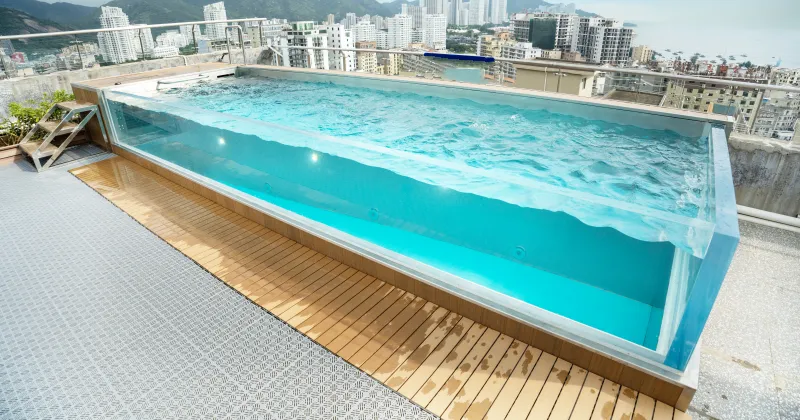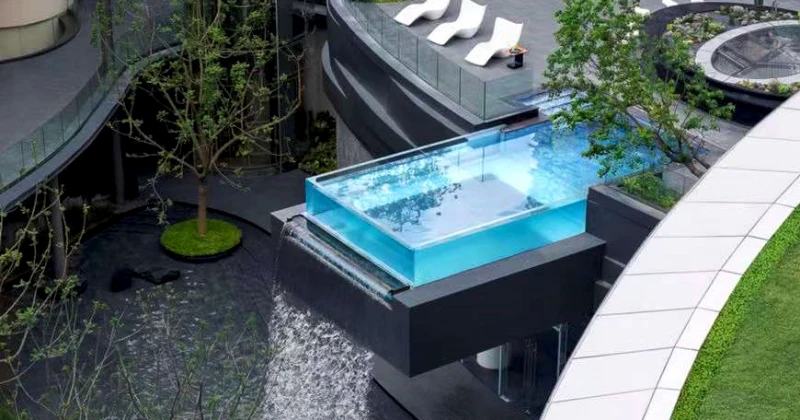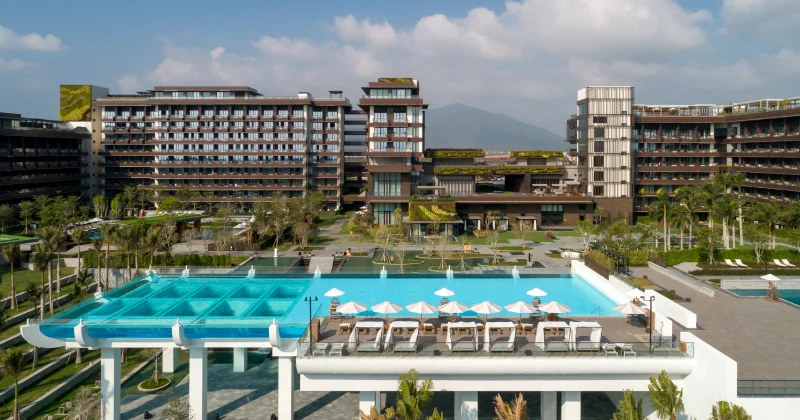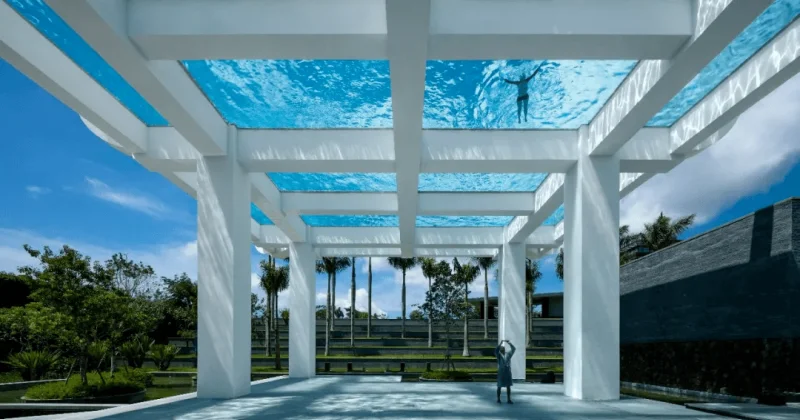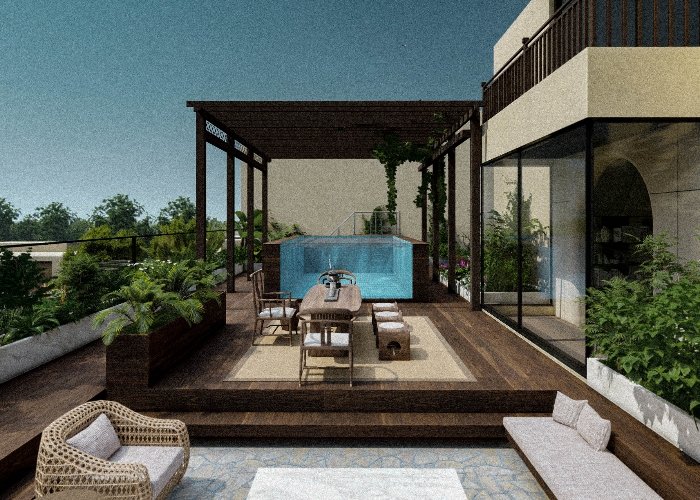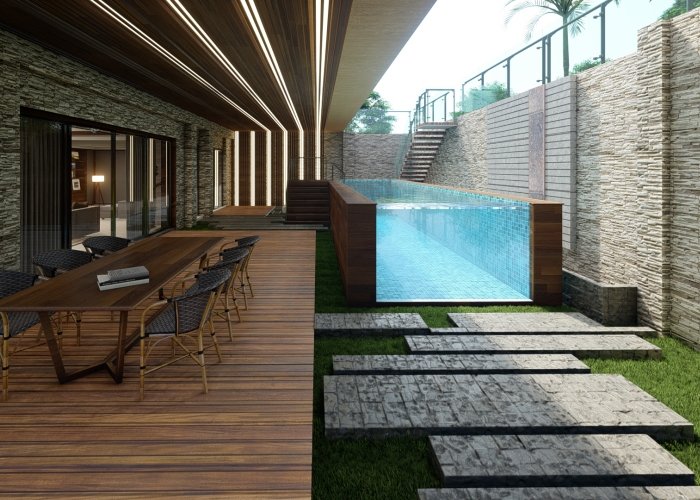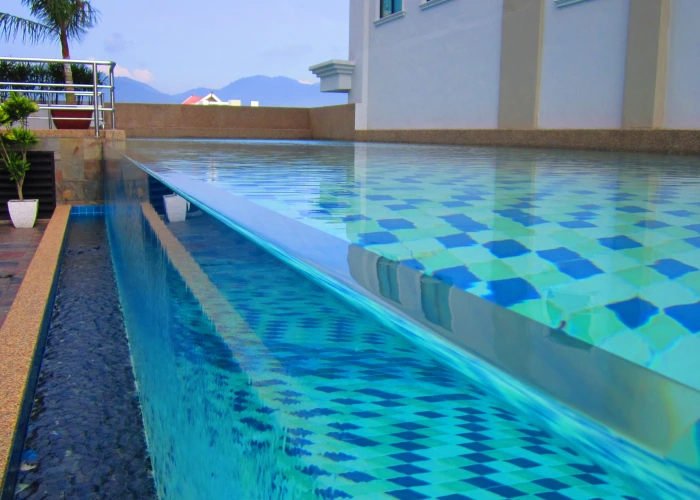
How to Remove Scratches from Plexiglass / Acrylic Panels
Maintaining and repairing plexiglass/acrylic panel surfaces is essential to preserving their aesthetic appeal and structural integrity. These materials are widely used in various applications due to their clarity, durability, and versatility. Whether it's for a glass-walled pool, like the AUPOOL acrylic glass above-ground pool – a versatile and stylish addition suitable for indoor and outdoor environments, villas, courtyards, and high-rise buildings – or other installations, scratches can significantly detract from their appearance.
To address this issue, there are several methods available to remove scratches from plexiglass and acrylic panels:
- Light Surface Scratches: Often resolved with regular cleaning routines and mild cleaners.
- Moderate Scratches: Can be treated using abrasive polishes and microfiber cloths.
- Deep Scratches: These may require advanced techniques such as wet sanding or professional intervention.
Understanding the appropriate method for different scratch depths ensures effective maintenance and prolongs the lifespan of your plexiglass/acrylic panel surfaces. For more details on why acrylic might be preferred over traditional glass in certain applications, you can explore this insight on glass walls provided by AUPOOL.

Understanding Plexiglass and Acrylic
Plexiglass and acrylic panels are popular alternatives to traditional glass, known for their unique characteristics and versatility.
Definition and Characteristics
- Plexiglass: A brand name synonymous with acrylic, plexiglass is a transparent thermoplastic often used in sheet form as a lightweight or shatter-resistant alternative to glass.
- Acrylic: A plastic material known for its optical clarity and resistance to impact. Acrylic can come in various colors and finishes, making it suitable for numerous applications.
Benefits of Using Plexiglass/Acrylic Panels instead of Glass Walls
- Durability: Both plexiglass and acrylic panels are more resistant to impact compared to glass walls, reducing the risk of shattering.
- Inexpensive: These materials are generally more cost-effective than glass, providing an economical option without compromising on quality.
- Lightweight: Plexiglass and acrylic are significantly lighter than glass, making them easier to handle and install.
- Optical Clarity: They offer excellent transparency, often clearer than glass, enhancing their suitability for applications requiring high visibility.
- Versatility: Available in various colors and finishes, these materials can be tailored to fit different aesthetic requirements.
For instance, when considering glass pool designs, the use of plexiglass or acrylic alongside traditional glass elements can contribute to stunning visual effects. A swimming current machine utilizes these materials to ensure durability while maintaining clear visibility — redefining fitness and thrill in the water. Similarly, when integrating plunge pools into outdoor spaces, the use of plexiglass or acrylic can blend nature with modern design effortlessly.
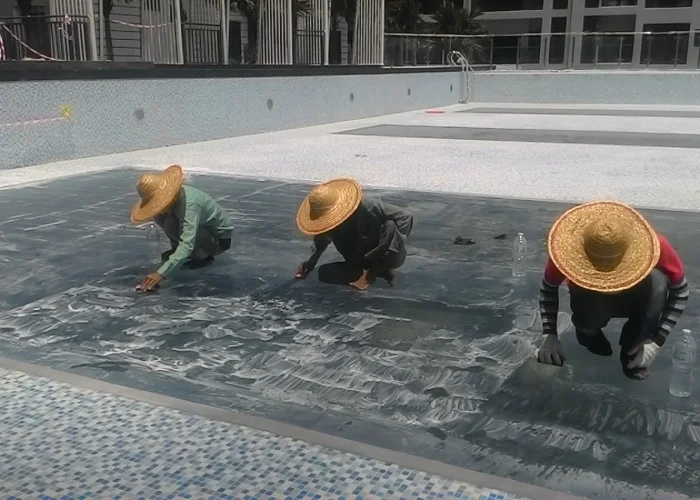
Light Surface Scratches
Light surface scratches on plexiglass or acrylic panels are common and can often be addressed through regular maintenance routines. These minor imperfections can typically be treated with simple cleaning and polishing techniques.
Step-by-Step Guide for Cleaning and Polishing Plexiglass/Acrylic Panels
Preparation:
- Gather materials: water, mild dish detergent, a soft cloth, and acrylic cleaner.
Cleaning:
- Mix a few drops of mild dish detergent with water.
- Dampen a soft cloth with the soapy solution.
- Gently clean the scratched area in a circular motion to remove any dirt or debris.
Rinsing and Drying:
- Rinse the area with clean water.
- Dry the surface with a dry, lint-free cloth to prevent further scratching.
Polishing:
- Apply an acrylic cleaner such as Novus No. 1 polish to another clean, soft cloth.
- Rub the polish onto the scratched area in small circular motions.
Continue polishing until the light scratches are no longer visible and the surface is clear.
Commercial Products
For restoring the clarity of your plexiglass or acrylic panel surfaces, consider using commercial products like Novus No. 1 polish. This product is specifically designed to eliminate fine scratches and improve optical clarity. Regular use of such products can keep your surfaces looking new and well-maintained.
To further explore the versatile applications of plexiglass or acrylic panels, you can check out AUPOOL's acrylic glass above-ground pool, which offers a range of stylish acrylic ground pools suitable for indoor and outdoor environments, villas, courtyards, and high-rise buildings. These pools not only provide an opportunity for exercise and training but also offer the benefits of hydrotherapy.
Additionally, if you're interested in the critical aspects of pool design such as the ideal thickness for glass walls or acrylic panels, AUPOOL's blog post covers this topic comprehensively, discussing factors like pool depth, length, and safety requirements that influence the choice of panel thickness. This information is crucial for ensuring the durability of your pool installation.
Remember, regular maintenance not only addresses light scratches but also prolongs the lifespan of your plexiglass or acrylic installations.

Moderate Scratches
Moderate scratches on plexiglass or acrylic require a bit more effort and precision to address compared to light surface scratches. These scratches are too deep for simple polishing but not severe enough to warrant replacement. The key is using abrasive acrylic polish in combination with appropriate tools.
Techniques for Treating Moderate Scratches
1. Preparation
- Clean the surface thoroughly to remove any dirt or debris. Use a mild dish detergent mixed with water.
- Dry the area with a clean cloth to ensure no moisture remains.
2. Using Abrasive Acrylic Polish
- Apply a small amount of abrasive acrylic polish onto a microfiber cloth.
- Rub the polish over the scratched area in a circular motion, applying consistent pressure. This helps in gradually smoothing out the scratch.
- Continue this process until you notice the scratch beginning to fade.
3. Polishing
- Once the scratch is less visible, switch to a finer polish like Novus No. 2. This will help restore clarity and shine.
- Buff the area gently with another clean microfiber cloth until the surface looks even.
4. Finishing Touches
- For additional clarity, you can use Novus No. 1 as a final step to polish and protect the surface.
Using these techniques, you can effectively treat moderate scratches on your plexiglass or acrylic surfaces, maintaining their appearance and integrity.
For those considering more robust maintenance solutions, exploring innovative materials like shipping container pools might be intriguing due to their durability and ease of customization.
If you require further assistance or have specific questions about your project, feel free to contact us.
Evaluate whether glass or acrylic suits your needs by comparing their benefits in different contexts, such as swimming pools. You can learn more about which is better for a swimming pool, by considering factors like appearance, design, cost, maintenance, and safety.
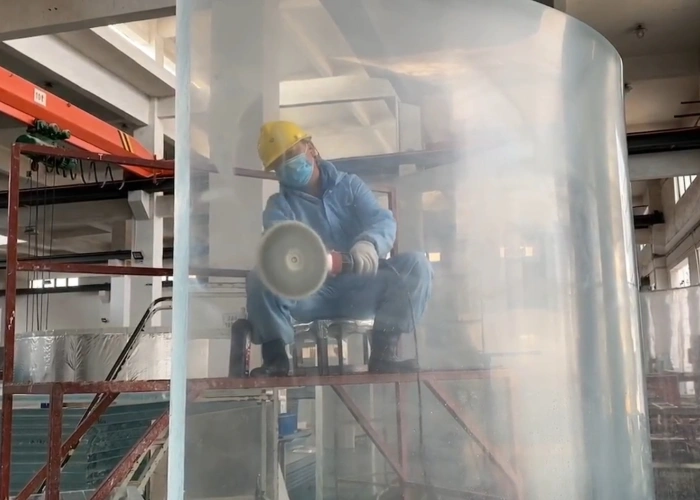
Deep Scratches and Irreparable Damage
Deep scratches can be particularly problematic when dealing with plexiglass or acrylic materials. These types of scratches are typically more than 5mm deep and can compromise the structural integrity of the material. One major concern associated with deep scratches is crazing, which refers to the appearance of fine cracks that may lead to further deterioration.
Addressing Deep Scratches
Aggressive Sanding/Polishing:
- Wet Sanding: Start by using a coarse grit sandpaper (e.g., 400 grit) to remove the majority of the scratch. Gradually progress to finer grits (e.g., up to 1500 grit) for a smoother finish.
- Polishing: Employ a rotary polisher equipped with foam or wool buffing pads, along with specialized compounds, to restore clarity.
Professional Help vs. Replacement:
- Professional Assistance: For extensive damage, seeking professional help ensures proper restoration without risking additional harm.
- Replacement: In cases where scratches are too severe, it might be more cost-effective to replace the affected area with a new sheet of plexiglass/acrylic.
Important Considerations:
- Avoid using anything rougher than 2000 grit on clear plastic/perspex.
- Specialty buffing tools are crucial for effectively managing deep scratches.
For those who frequently encounter deep scratches and are considering alternative materials, exploring options like polycarbonate or consulting reputable glass distributors for specialized acrylic products can provide better durability and longevity.

Alternative Methods for Severe Scratches
For severe scratches on plexiglass or acrylic, advanced techniques such as wet sanding with fine grits and using a rotary polisher with specialized compounds can be highly effective. These methods should be approached with caution and may require experience.
Wet Sanding
Materials Needed
- Wet/dry sandpaper (400 to 1500 grit)
- Water
- Clean cloths
Procedure
- Begin with the coarsest grit (around 400) and move in a circular motion.
- Gradually shift to finer grits (up to 1500) for a smoother finish.
- Keep the surface wet throughout the process to reduce friction and prevent heat buildup.
Machine Buffing
Materials Needed
- Rotary polisher
- Specialized buffing compounds
- Foam or wool buffing pads
Procedure
- Use a low-speed setting on the rotary polisher to avoid overheating.
- Apply small amounts of buffing compound, working in small sections.
- Finish with a fine polishing compound for optimal clarity.
Automotive Products
Automotive products like car polish can also be utilized for severe scratches. Car polish often contains fine abrasives that can help restore the smoothness and clarity of acrylic surfaces.
Example Products
- Car polish
- DIY acrylic polish recipes
Exploring these methods provides additional options for maintaining and repairing plexiglass/acrylic surfaces.
It's crucial to understand which method suits your level of expertise and the severity of the scratches you're dealing with. Always test on a small area first to ensure compatibility with your specific material.
If you're interested in understanding different types of transparent pools, including glass-bottom, glass-walled, pool windows, acrylic, plexiglass, and see-through pools along with their unique designs and features, you might find this resource helpful.
For those looking for sustainable and environmentally friendly options, acrylic pools can be a great choice. These pools come with various sustainable features that help preserve the environment while also enhancing property value and attracting buyers for a greener future.
Furthermore, if you're considering acrylic pool windows, it's worth noting that acrylic panels are ideal for this purpose. They offer safety with shatter resistance, excellent clarity, superior insulation, and durability, making them a better alternative to traditional glass panels.
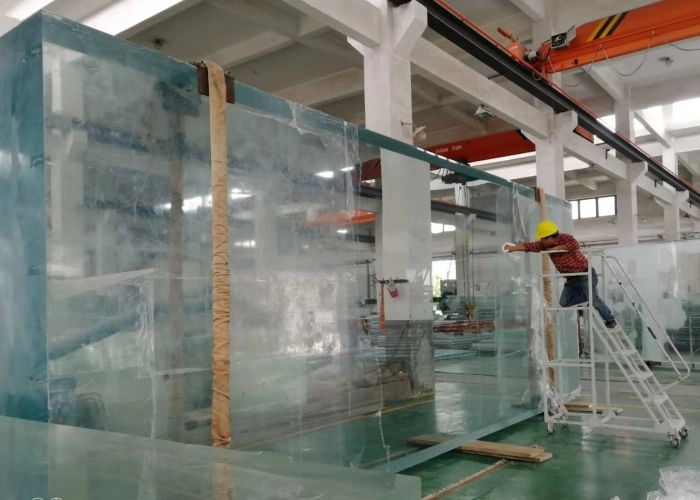
When to Seek Professional Help or Consider Replacement
Identifying when a scratch is beyond repair is crucial for maintaining the integrity of your plexiglass or acrylic surfaces. Deep scratches, particularly those greater than 5mm, often pose significant challenges. Attempting to address these with DIY methods can sometimes lead to crazing—a form of chemical damage that makes the material brittle. If you notice extensive scratching or damage, it might be best to seek professional assistance.
Indications that professional help or replacement is needed:
- Depth of Scratches: Scratches deeper than 5mm are typically too severe for standard repair methods.
- Structural Integrity: Any signs of cracking or splitting in the material.
- Cloudiness or Crazing: Chemical changes that compromise the clarity and strength of the acrylic.
When considering alternatives, materials like polycarbonate offer enhanced durability and impact resistance compared to plexiglass/acrylic. Consulting with glass distributors can provide options tailored to your specific needs. In some cases, purchasing a new acrylic sheet or switching to a stronger plastic may be more practical and cost-effective.
For complex repairs, professionals use specialized tools and techniques that aren't easily replicated at home. This ensures a high-quality finish and maintains the aesthetic appeal of your installations.
If you're looking to enhance your swimming experience further, you might want to explore our guide on underwater exercise. Incorporating a swimming pool current machine or endless pool system into your traditional pool can revolutionize your swim routines by allowing you to design hyper-personalized workouts that surpass regular pools.
Additionally, if you're considering upgrading your pool's aesthetics, you could explore installing a glass wall. This Crystal Clear Glass Above Ground Pool not only elevates your backyard oasis with elegance and fun but also provides a delightful swimming experience.
Lastly, if you're interested in the features that make acrylic swimming pools more integrated and appealing, we have a comprehensive guide. Dive into bliss with acrylic pools—where innovation meets paradise. Beyond aesthetics, practicalities create your dream escape. Modernity, resilience, and elegance await your aquatic journey!
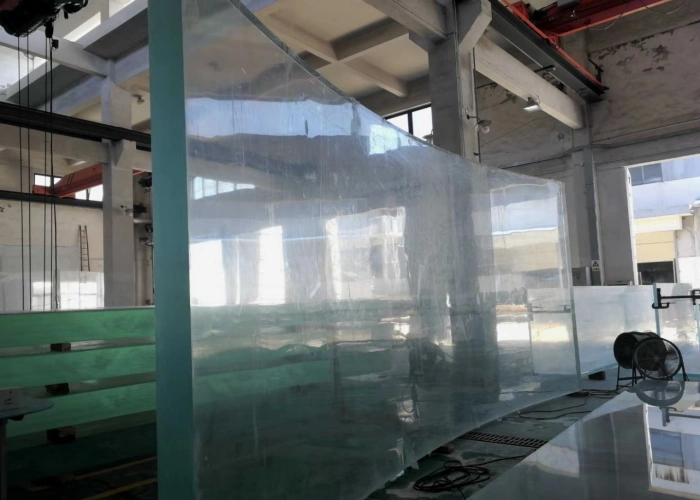
Conclusion
Proper plexiglass maintenance and timely acrylic repair are crucial for prolonging the lifespan of these materials. Addressing scratches promptly can prevent further damage and maintain the clarity of your surfaces.
Feel confident in trying out the discussed methods. Exercise caution when dealing with different levels of scratches:
- Light surface scratches: Use mild cleaners and polishes.
- Moderate scratches: Apply abrasive acrylic polish.
- Deep scratches: Consider professional help or replacement if needed.
If you're interested in exploring more about different types of swimming pools to integrate into your house, such as glass-walled pools, which offer outstanding transparency, resilience, and customization options, you can dive into our blog post on diverse types of swimming pools.
For a more comprehensive guide on maintaining acrylic pools, including tips on how to maintain the quality and durability of an acrylic pool and the right equipment required for the job, we recommend checking out our blog post on maintaining acrylic pools.
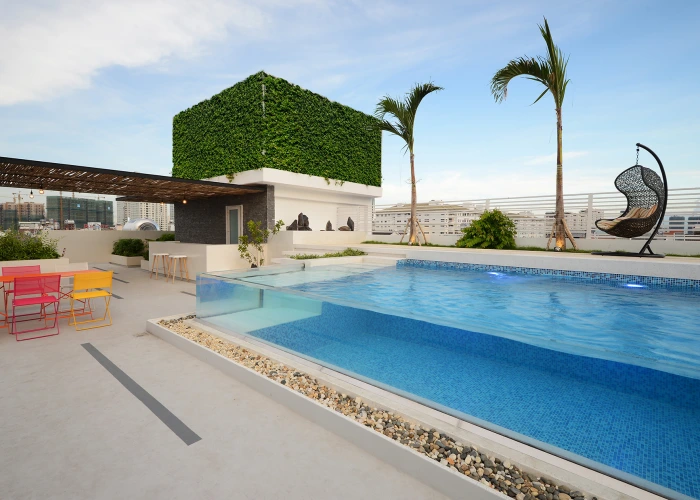
FAQs
What are the benefits of using plexiglass/acrylic instead of glass?
Plexiglass and acrylic are inexpensive, long-lasting, and offer optical clarity and a wide range of colors. They are also an alternative to traditional glass, providing a durable and versatile option for various applications.
How can light surface scratches on plexiglass/acrylic be addressed?
Light surface scratches can be addressed through regular maintenance routines using mild cleaners such as water and dish detergent. Additionally, commercial products like Novus No. 1 polish can be used to restore the clarity of the surface.
What techniques can treat moderately deep scratches on plexiglass/acrylic surfaces?
Moderately deep scratches can be treated using abrasive acrylic polish and microfiber cloths. These techniques can help in effectively addressing moderate scratches without causing further damage to the surface.
What are the potential solutions for deep scratches on plexiglass/acrylic surfaces?
Deep scratches pose challenges, including the risk of causing further damage such as crazing. Potential solutions include aggressive sanding or seeking professional help versus replacing the affected area with a new piece of plexiglass/acrylic.
What are some alternative methods for tackling severe scratches on plexiglass/acrylic?
Advanced techniques such as wet sanding with fine grits and using a rotary polisher with specialized compounds can be employed for severe scratches. Other alternatives include utilizing automotive products like car polish or trying DIY acrylic polish recipes, though caution should be exercised.
When should professional help be sought or is replacement considered for plexiglass/acrylic surfaces?
Indications that a scratch is beyond repair and professional assistance should be sought, or the plexiglass/acrylic needs to be replaced entirely. Considerations should also be made for alternative materials like polycarbonate or consulting glass distributors for specialized acrylic products, depending on the severity of the damage.








